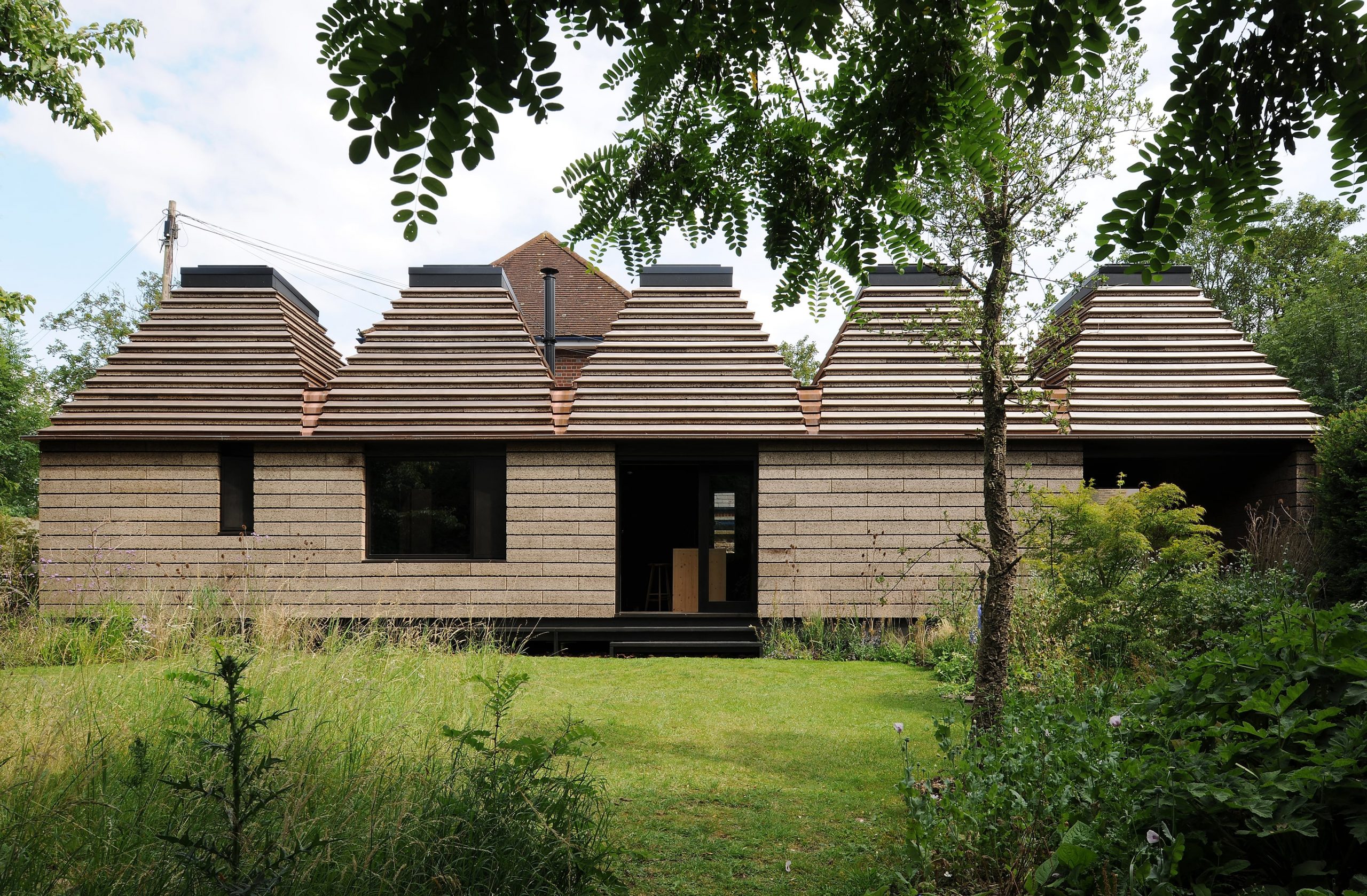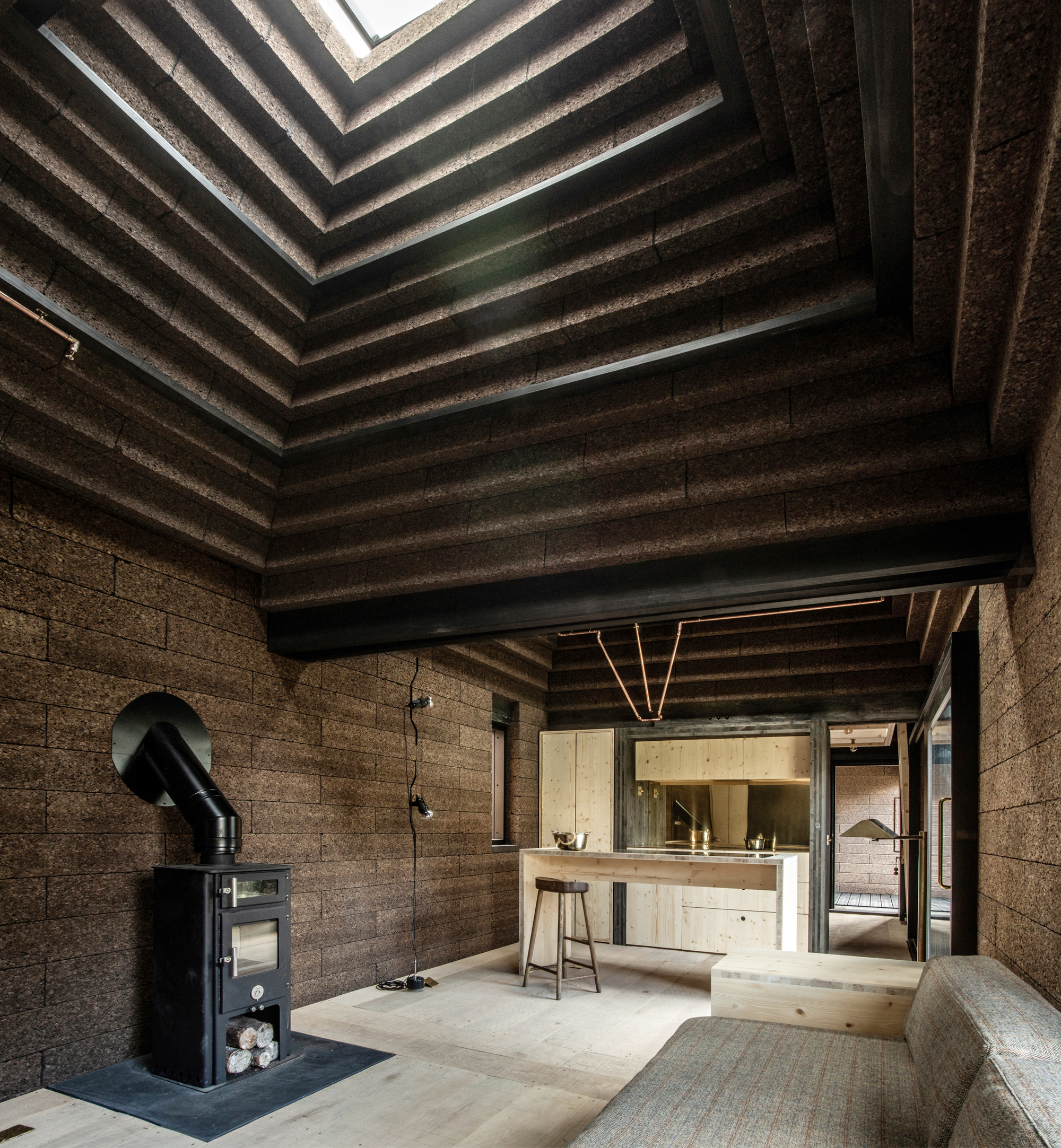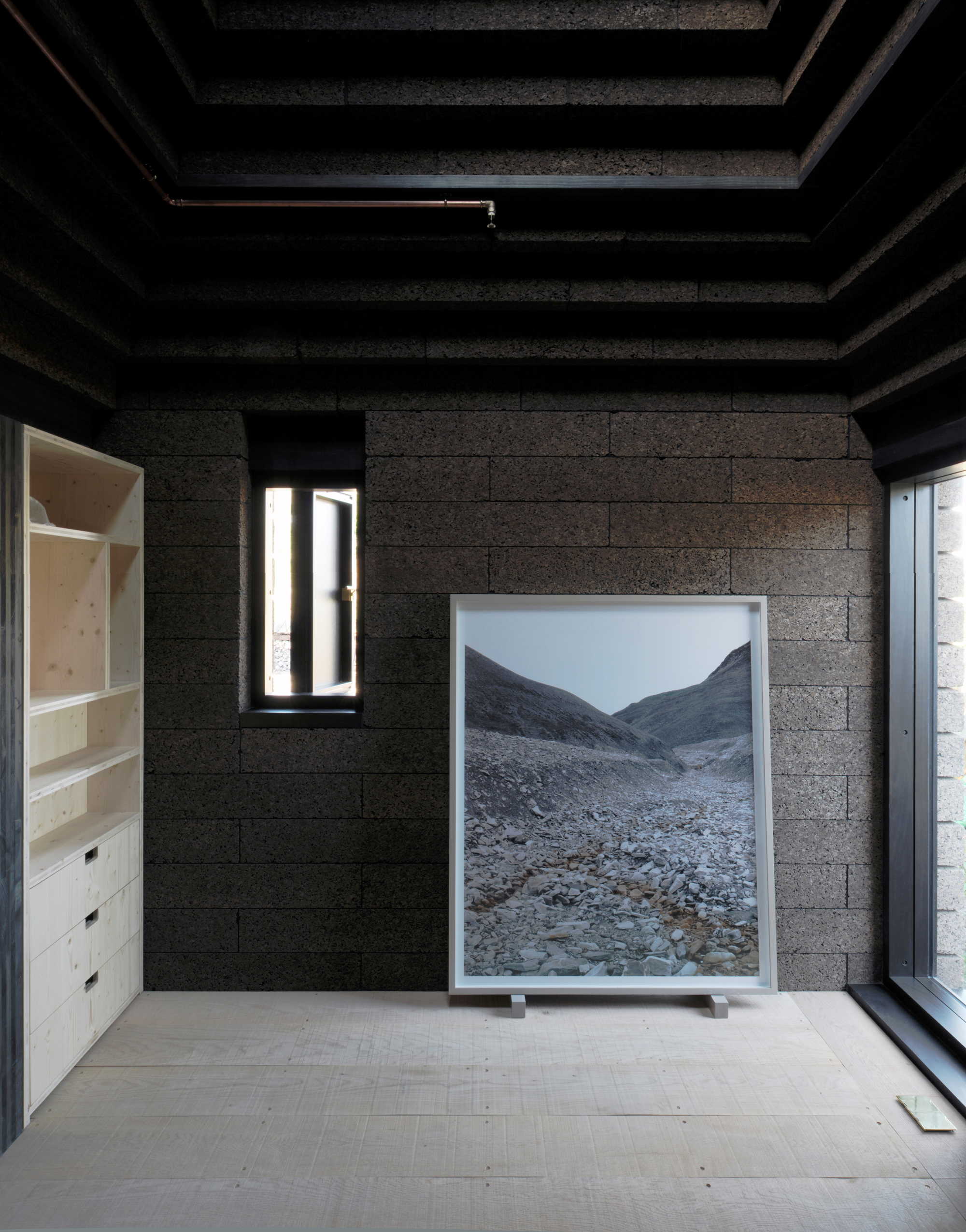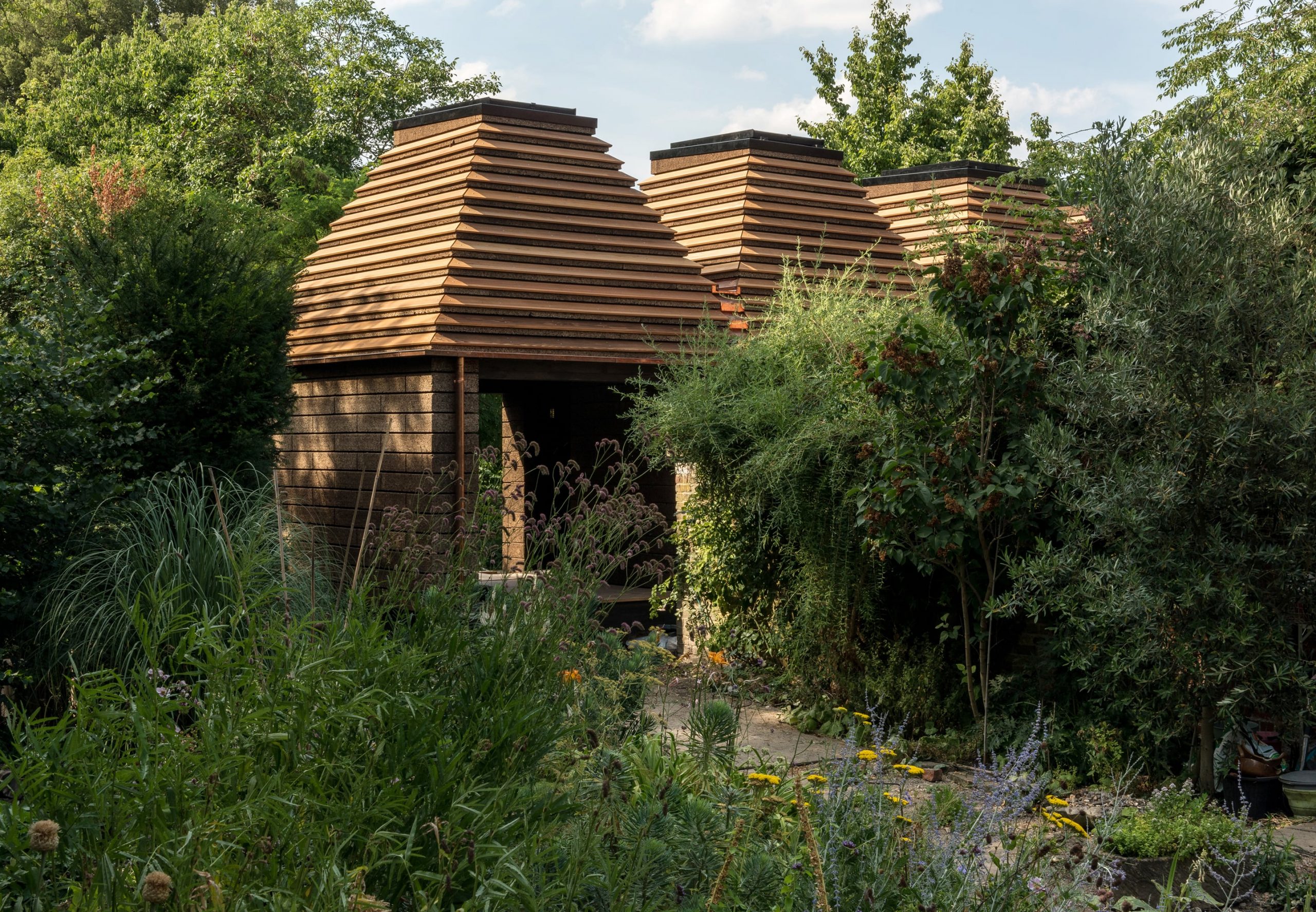The Cork House
The Cork House was the winner of the RIBA Stephen Laurence Prize and a structure of great ingenuity with solid structural cork walls and a roof that emits next to zero carbon.
 Matthew Barnett Howland with Dido Milne and Oliver Wilton have used cork blocks to build Cork House in Berkshire, England, which was shortlisted for RIBA’s Stirling Prize for 2019and which won the 2019 Stephen Lawrence Prize that rewards new, experimental architectural talent, celebrating projects with a construction budget of less than £1 million.
Matthew Barnett Howland with Dido Milne and Oliver Wilton have used cork blocks to build Cork House in Berkshire, England, which was shortlisted for RIBA’s Stirling Prize for 2019and which won the 2019 Stephen Lawrence Prize that rewards new, experimental architectural talent, celebrating projects with a construction budget of less than £1 million.
Cork House is a unique fusion of ancient construction methods and cutting-edge technical research to produce a highly innovative, low carbon solution with a wide variety of applications from mass housing to emergency shelters.

 Nestled in the undergrowth beside the River Thames, the dwelling was designed in response to the architecture industry’s impact on biodiversity, greenhouse gas emissions, and reliance on single-use materials. Designed with immense attention to detail, Cork House is located within the area of a Grade II Listed mill house dating back to the early 19th century beautifully reflecting and respecting the natural surroundings in form and construction. The ‘whole-life approach’ to sustainability truly sets this project apart, according to the RIBA Jury members. Designed, tested, and developed in partnership with The Bartlett School of Architecture UCL, the collaborative team delivered a project that is the first of its kind.
Nestled in the undergrowth beside the River Thames, the dwelling was designed in response to the architecture industry’s impact on biodiversity, greenhouse gas emissions, and reliance on single-use materials. Designed with immense attention to detail, Cork House is located within the area of a Grade II Listed mill house dating back to the early 19th century beautifully reflecting and respecting the natural surroundings in form and construction. The ‘whole-life approach’ to sustainability truly sets this project apart, according to the RIBA Jury members. Designed, tested, and developed in partnership with The Bartlett School of Architecture UCL, the collaborative team delivered a project that is the first of its kind.
The biogenic construction of prefabricated cork blocks and engineered timber is carbon negative at completion and has remarkably low whole life carbon. All the components can be reused or recycled, and the expanded cork blocks have been made using by-product and waste from cork forestry and the cork stopper industry. Internally, the biophilic elements such as the exposed cork and oak flooring capture the light and create a wonderfully tranquil sensory experience. In summer the skylights open to bring a sense of lightness to space and in winter the snug interiors emanate a sense of warmth and protection. As sustainability becomes integral to all construction, this development pushes us further to look beyond the requirements and aspire to really integrate ourselves with nature.
The inventiveness lies within the structure’s ease of assembly. The whole house is ‘designed for disassembly’ and can be constructed by hand. As the first of its type, it is truly exciting to think about what this project could inspire within the architectural world. The collaborative team, which includes not only The Bartlett School of Architecture UCL but also The University of Bath, Amorim UK, Ty-Mawr the BRE, and consultants Arup and BRE, have really done something special with this project. The detailing is very clever, and the structure draws upon ancient inspiration, harking back to a time when humans and nature were more intertwined.
 Form, function, and footprint are all equally considered and respected. This is a truly well thought through, carefully researched project that has created a home that inspires.
Form, function, and footprint are all equally considered and respected. This is a truly well thought through, carefully researched project that has created a home that inspires.
Project Name: Cork House
RIBA region: South
Architect practice: Matthew Barnett Howland with Dido Milne and Oliver Wilton
Date of completion: January 2019
Client company name: Matthew Barnett Howland + Dido Milne
Project city/town: Eton
Contract value: Confidential
Internal area: 44.00 m²
Cost per m²: Confidential
Weathered external room (11sq.m.) is an integral part of the building structure
Contractor company name: Matthew Barnett Howland (assisted by M&P Construction)
Consultants:Structural Engineers: Arup
Fire Engineering: Arup
Whole Life Carbon Assessment: Sturgis Carbon Profiling LLP
Cork machining and fabrication: B-Made at The Bartlett UCL
Cork CNC machining: Wup Doodle, Jury Report









